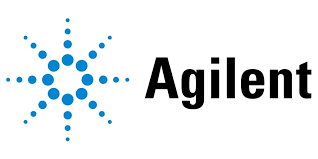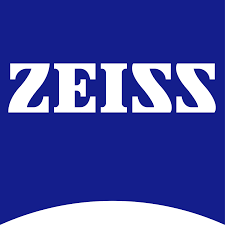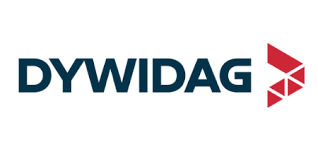Wabi Sabi Home Decor
Published Date: 07 November 2025 | Report Code: wabi-sabi-home-decor
Wabi Sabi Home Decor Market Size, Share, Industry Trends and Forecast to 2033
This comprehensive report covers the current state and future projections of the Wabi Sabi Home Decor market, offering in-depth insights, analytical data, regional breakdowns, and segmentation details from 2024 to 2033. It elucidates market size, growth dynamics, technological trends, and consumer behaviors impacting this industry. Key insights are derived from extensive research and expert opinions.
| Metric | Value |
|---|---|
| Study Period | 2024 - 2033 |
| 2024 Market Size | $1.50 Billion |
| CAGR (2024-2033) | 6.0% |
| 2033 Market Size | $2.57 Billion |
| Top Companies | ZenCraft Interiors, Tranquil Living |
| Last Modified Date | 07 November 2025 |
Wabi Sabi Home Decor (2024 - 2033)
Wabi Sabi Home Decor Market Overview
Customize Wabi Sabi Home Decor market research report
- ✔ Get in-depth analysis of Wabi Sabi Home Decor market size, growth, and forecasts.
- ✔ Understand Wabi Sabi Home Decor's regional dynamics and industry-specific trends.
- ✔ Identify potential applications, end-user demand, and growth segments in Wabi Sabi Home Decor
What is the Market Size & CAGR of Wabi Sabi Home Decor market in 2024?
Wabi Sabi Home Decor Industry Analysis
Wabi Sabi Home Decor Market Segmentation and Scope
Tell us your focus area and get a customized research report.
Wabi Sabi Home Decor Market Analysis Report by Region
Europe Wabi Sabi Home Decor:
Europe has emerged as a significant market for Wabi Sabi Home Decor, reflecting a deep appreciation for art, culture, and history. With a market valuation of 0.44 units in 2024 and an anticipated rise to 0.76 units by 2033, European consumers value the intricate balance of natural forms and understated beauty. The market benefits from a robust network of local artisans and design houses that emphasize sustainability. Innovative retail models and a strong culture of craftsmanship further contribute to the solid performance of the market in this region.Asia Pacific Wabi Sabi Home Decor:
Asia Pacific presents a vibrant landscape for Wabi Sabi Home Decor, driven by strong cultural influences and a rising middle class. In 2024, the market was valued at 0.29 units, with expectations to reach 0.49 units by 2033. Regional consumers appreciate the blend of traditional design and modern minimalism, prompting manufacturers to innovate while preserving artisanal techniques. Government incentives for sustainable practices and local craftsmanship further bolster market growth in this region.North America Wabi Sabi Home Decor:
In North America, the market is more established with a valuation of 0.54 units in 2024, expected to grow to 0.93 units by 2033. The region's consumers are increasingly drawn to Wabi Sabi due to its emphasis on simplicity, natural materials, and environmental sustainability. Retailers are diversifying product lines to include artisan-crafted decor items, while online platforms facilitate access to a broader range of unique home decor products. The fusion of traditional aesthetics with modern functionality is driving steady growth in this region.South America Wabi Sabi Home Decor:
The South American market, while comparatively smaller with a valuation of 0.02 units in 2024 and projected to achieve 0.04 units by 2033, is witnessing gradual expansion. Emerging trends in interior design and a growing interest in unique cultural expressions have spurred interest in the Wabi Sabi aesthetic. Local designers are beginning to incorporate elements of imperfection, appealing to a niche but expanding clientele that values distinctiveness and authenticity.Middle East & Africa Wabi Sabi Home Decor:
The Middle East and Africa region is an emerging market for Wabi Sabi Home Decor, characterized by growing consumer interest in personalized and sustainable home decor solutions. The market was valued at 0.21 units in 2024 and is projected to increase to 0.36 units by 2033. Rising urbanization, coupled with a shift towards modern and minimalist lifestyles, is fostering demand for decor that harmonizes with traditional cultural elements. As awareness about sustainable practices increases, manufacturers are tapping into this niche market with innovative products that merge modern aesthetics with regional design sensibilities.Tell us your focus area and get a customized research report.
Wabi Sabi Home Decor Market Analysis By Product
Global Wabi-Sabi Home Decor Market, By Product Market Analysis (2024 - 2033)
The by-product segment encompasses key offerings such as furniture, decorative accessories, and lighting fixtures. In 2024, the furniture segment alone was valued at 0.93 units and is expected to reach 1.59 units by 2033, maintaining a consistent market share. Decorative accessories and lighting fixtures follow a similar trajectory, each contributing significantly to the sector. This segmentation enables manufacturers to tailor product design and marketing strategies to meet evolving consumer tastes and technological advancements, thereby enhancing overall market performance.
Wabi Sabi Home Decor Market Analysis By Style
Global Wabi-Sabi Home Decor Market, By Style Market Analysis (2024 - 2033)
The by-style segmentation differentiates products based on aesthetic approaches such as Minimalist, Rustic, and Eclectic designs. The Minimalist style, with a market size growing from 0.93 units in 2024 to 1.59 units by 2033, continues to dominate with a stable share of 62.09%. Rustic and Eclectic styles, though representing smaller segments with market sizes moving from 0.30 to 0.52 units and 0.27 to 0.45 units respectively, maintain healthy market shares of 20.23% and 17.68%. These diverse styles reflect varying consumer preferences, ensuring that the market remains vibrant and adaptable.
Wabi Sabi Home Decor Market Analysis By Material
Global Wabi-Sabi Home Decor Market, By Material Market Analysis (2024 - 2033)
In the by-material segment, products are classified based on primary materials such as Wood, Ceramics, and Textile. Wood products, favored for their natural and warm appeal, exhibit a robust market size progression from 0.93 units in 2024 to 1.59 units in 2033, securing a dominant share. Ceramics and Textile items, appreciated for their tactile and aesthetic qualities, move from 0.30 to 0.52 units and from 0.27 to 0.45 units respectively. This segmentation by material not only drives product innovation but also supports sustainability and eco-friendly initiatives across the market.
Wabi Sabi Home Decor Market Analysis By Consumer Type
Global Wabi-Sabi Home Decor Market, By Consumer Type Market Analysis (2024 - 2033)
The by-consumer-type segment distinguishes between individual consumers and commercial businesses. Individual consumers, who form the bulk of the market with an 83.07% share, are witnessing the market grow from 1.25 units in 2024 to an estimated 2.13 units by 2033. In contrast, commercial businesses, though smaller in size with a share of 16.93%, are expanding steadily from 0.25 units to 0.43 units over the same period. This differentiation enables market stakeholders to craft targeted strategies that respond to both personal and commercial demands, thereby reinforcing overall market resilience.
Wabi Sabi Home Decor Market Analysis By Price Range
Global Wabi-Sabi Home Decor Market, By Price Range Market Analysis (2024 - 2033)
The by-price-range segmentation categorizes the market into Budget, Mid Range, and Premium segments. The Budget segment, which accounts for 62.09% of the market, is projected to grow from 0.93 units in 2024 to 1.59 units by 2033. Mid Range offerings, valued at 0.30 units in 2024 and expected to reach 0.52 units by 2033, appeal to consumers seeking a balance of quality and affordability. Premium products, although representing a smaller share of 17.68%, are designed for niche markets and continue to gain traction among discerning consumers. This segmentation facilitates tailored product development and pricing strategies that align with diverse consumer purchasing powers and lifestyle choices.
Wabi Sabi Home Decor Market Trends and Future Forecast
Tell us your focus area and get a customized research report.
Global Market Leaders and Top Companies in Wabi Sabi Home Decor Industry
ZenCraft Interiors:
ZenCraft Interiors is renowned for its innovative approach to blending traditional artisanal techniques with modern design aesthetics. The company has been a leader in introducing sustainable, eco-friendly practices and has a significant global presence in the Wabi Sabi market.Tranquil Living:
Tranquil Living has established itself as a market pioneer by focusing on high-quality, handcrafted decor. Their collections emphasize natural beauty and simplicity, setting benchmarks for design integrity and environmental sustainability in the Wabi Sabi Home Decor sector.We're grateful to work with incredible clients.









FAQs
How can the report help align our marketing strategy with customer adoption trends?
The Wabi-Sabi Home Decor Market Report reveals a market size of $1.5 billion with a CAGR of 6.0%. By analyzing consumer preferences and trends, businesses can tailor marketing efforts to align with growing customer interests, ensuring more effective engagement.
What product features are in highest demand according to the report trends?
The report indicates that minimalist designs, particularly in furniture (62.09% market share), are in the highest demand. Additionally, rustic and eclectic styles are gaining traction, highlighting consumer interest in diverse yet harmonious home decor options.
Which regions offer the best market entry and expansion opportunities in the report industry?
Regions showing the best market opportunities include North America, projected to grow from $0.54 billion in 2024 to $0.93 billion in 2033, followed by Europe and Asia Pacific, reflecting robust consumer interest in wabi-sabi aesthetics.
What emerging technologies and innovations are shaping the market?
Innovations in sustainable materials and digital design tools are reshaping the Wabi-Sabi Home Decor market. Emphasizing eco-friendly sources, these technologies appeal to environmentally conscious consumers, fostering a trend towards personalized and unique home aesthetics.
Does the report include competitive landscape and market share analysis?
Yes, the Wabi-Sabi Home Decor Market Report provides a detailed competitive landscape analysis, showcasing major players and their market shares across segments like furniture, decorative accessories, and textiles, crucial for strategic positioning.
How can executives use the report to evaluate investment risks and ROI?
Executives can leverage insights on market size ($1.5 billion) and growth trends (6.0% CAGR) to assess potential returns. The report’s regional and segment analyses highlight risks and opportunities, aiding strategic investment decisions.
What is the market size of Wabi-Sabi Home Decor?
The Wabi-Sabi Home Decor market is valued at $1.5 billion, with a projected growth of 6.0% CAGR. This strong market performance indicates a rising consumer preference for unique and aesthetically pleasing home environments.
What are the market projections for different regions in Wabi-Sabi Home Decor?
The market projections show North America growing from $0.54 billion in 2024 to $0.93 billion in 2033, Europe from $0.44 to $0.76 billion, and Asia Pacific from $0.29 to $0.49 billion, signaling regional expansion opportunities.
